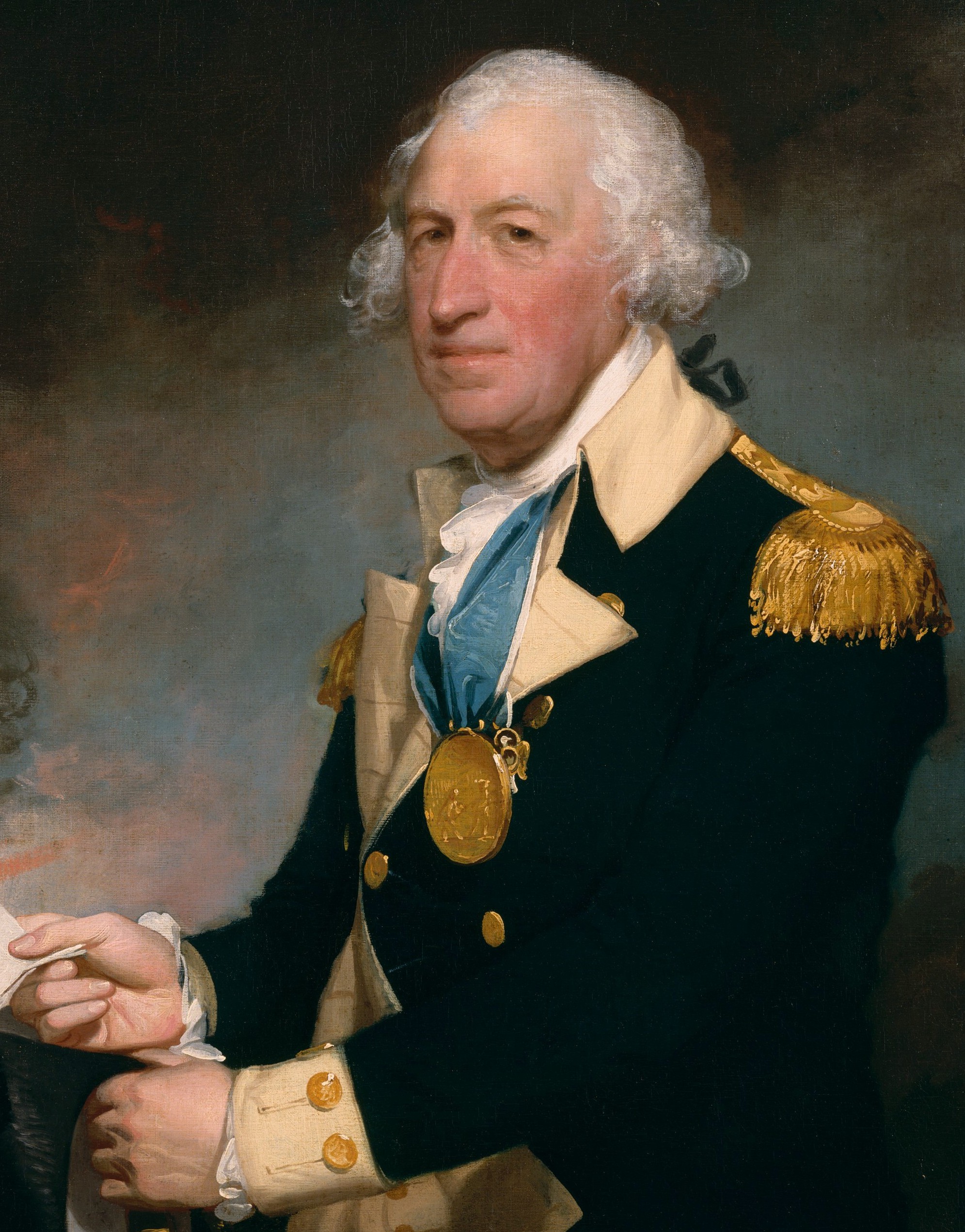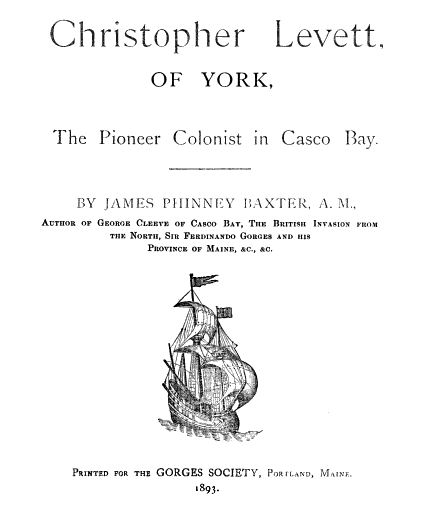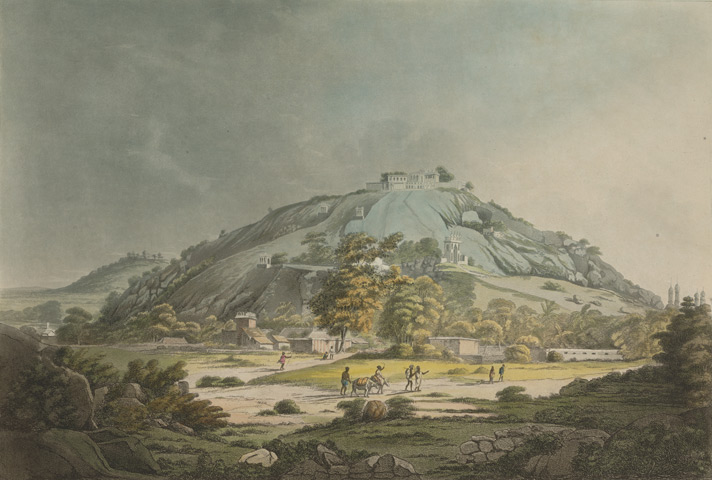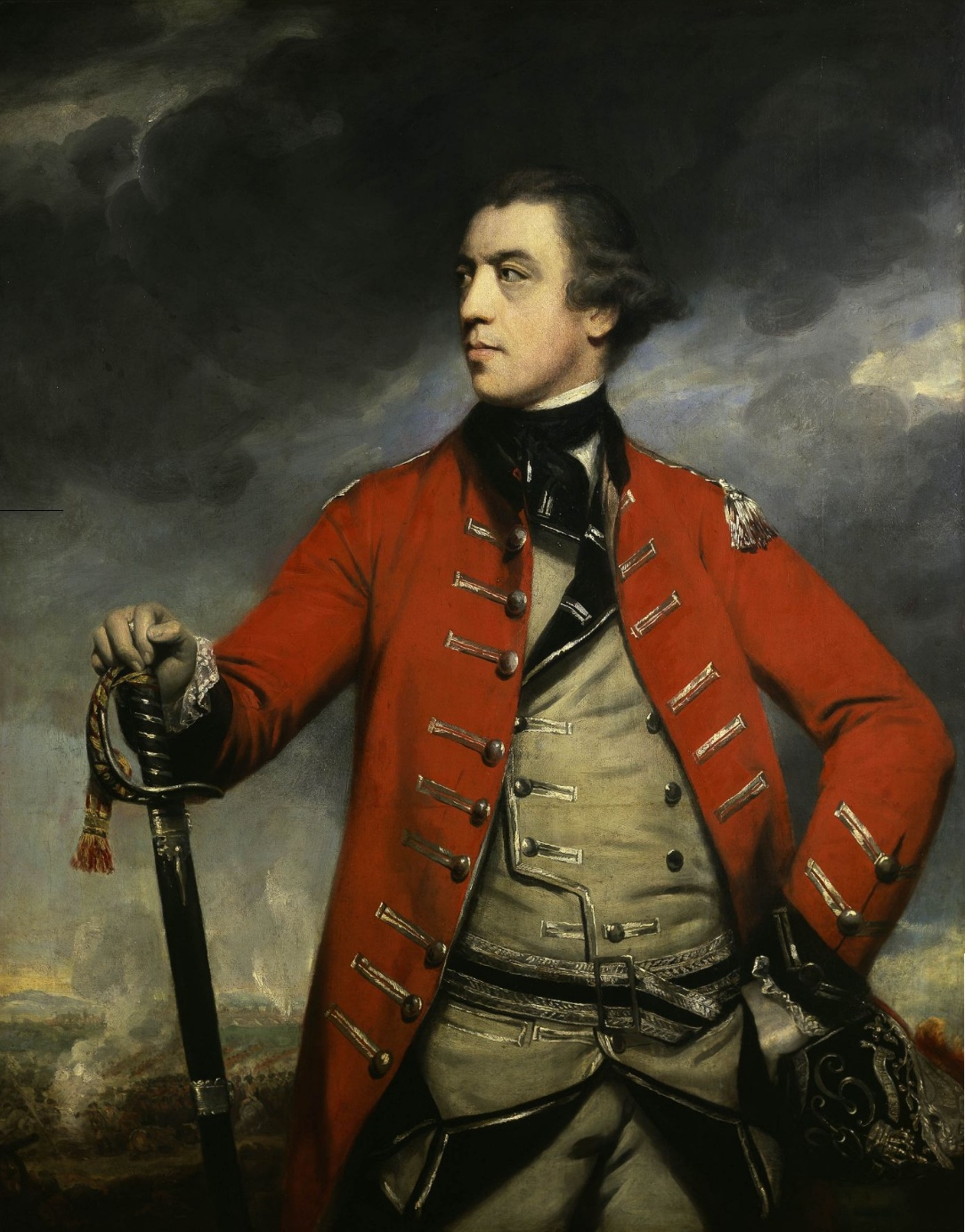|
Jane McCrea
Jane McCrea (c. 1752 – July 27, 1777) was an American woman who was killed by a Native American warrior serving alongside a British Army expedition under the command of John Burgoyne during the American Revolutionary War. Engaged to a David Jones, a Loyalist officer serving under Burgoyne, her death led to widespread outrage in the Thirteen Colonies and was used by American Patriots as part of their anti-British propaganda campaign. Born in Bedminster, New Jersey, McCrea moved to Saratoga, New York where she became engaged to Jones. When the Revolutionary War broke out, Jones fled to Quebec while McCrea's brothers divided their loyalties between the British and the Patriots. During the Saratoga campaign of 1777, McCrea left her brother's home to join Jones who was stationed in Fort Ticonderoga. While staying at Fort Edward, McCrea was abducted, killed and scalped by a group of Native American warriors. Upon receiving word of the incident, Burgoyne attempted to punish the cu ... [...More Info...] [...Related Items...] OR: [Wikipedia] [Google] [Baidu] |
The Death Of Jane McCrea
''The Death of Jane McCrea'' is an 1804 history painting by the American artist John Vanderlyn. It depicts a scene from the American Revolutionary War when Jane McCrea, was abducted and murdered by two Indian warriors. The murder took place during the Saratoga campaign of 1777, with the warriors being part of a British expedition under General John Burgoyne and murdering McCrea despite the fact that she was engaged to Loyalist officer David Jones, who was also part of the expedition. Vanderlyn was supportive of France during the French Revolutionary and Napoleonic Wars, and the painting was used to illustrate an anti-British theme via portraying a murder by British-allied Indians and depicting Jones, shown in the distance rushing to try and rescue McCrea, not in the red coat of the British Army but the blue coat of the Continental Army. Vanderlyn had moved to Paris and became the first American ever to exhibit at the Paris Salon when he displayed two portraits at the Salon of 180 ... [...More Info...] [...Related Items...] OR: [Wikipedia] [Google] [Baidu] |
Fort Edward (town), New York
Fort Edward is a Administrative divisions of New York#Town, town and the county seat of Washington County, New York, Washington County, New York (state), New York, United States. The population was 5,991 at the 2020 census. The municipal center complex is on U.S. Route 4 in New York, U.S. Route 4 between the villages of Hudson Falls, New York, Hudson Falls and Fort Edward (village), New York, Fort Edward.Google Maps (383 Broadway, Fort Edward, New York) Retrieved January 14, 2015.New York State Unified Court ... [...More Info...] [...Related Items...] OR: [Wikipedia] [Google] [Baidu] |
James Phinney Baxter
James Phinney Baxter (March 23, 1831 – May 8, 1921) was an American politician, businessperson, historian, civic leader, and benefactor of Portland, Maine. He was elected as mayor of Portland for six single-year terms between 1893 and 1905. His personal library, containing over 100 leather-bound books of maps, portraits, engravings and personal letters, is available for reference at the Portland Public Library. Biography James Phinney Baxter was the son of Dr. Elihu Baxter and Sarah Cone Baxter. He was born in Gorham, Maine (in what is now called the Baxter House), on March 23, 1831, but lived in Portland from 1840. He attended Master Jackson's School until 1844, and then Lynn Academy until 1848. He began work in the Boston law offices of Rufus Choate, but ill health forced a return to Portland, where he worked in a dry-goods importing business with William G Davis, pioneering a canning and packing business (Portland Packing Company) that became important to the state's eco ... [...More Info...] [...Related Items...] OR: [Wikipedia] [Google] [Baidu] |
Thomas Anburey
Thomas Anburey (active late 1700s) was a British explorer and writer who wrote a disputed narrative of his travels in North America in the 1770s-1780s. Arnburey sailed from Cork in 1776 in charge of Irish recruits of the 47th Regiment. He served under General John Burgoyne in the Battle of Saratoga The Battles of Saratoga (September 19 and October 7, 1777) were two battles between the American Continental Army and the British Army fought near Saratoga, New York, concluding the Saratoga campaign in the American Revolutionary War. The Battle .... Taken prisoner in the United States, he was sent back to Britain in 1781. He stayed in the army one more year, then returned to private life. He wrote “Travels Through the Interior Parts of America, 1771-1781” which was published in England in 1789. It was published again in London in 1791, described as a New Edition. It was reissued in 2 volumes in 1923. This work has been “a subject of controversy and entertainment ever sinc ... [...More Info...] [...Related Items...] OR: [Wikipedia] [Google] [Baidu] |
Wyandot People
The Wyandot people (also Wyandotte, Wendat, Waⁿdát, or Huron) are an Indigenous people of the Northeastern Woodlands of the present-day United States and Canada. Their Wyandot language belongs to the Iroquoian languages, Iroquoian language family. In Canada, the Huron-Wendat Nation has two First Nations in Canada, First Nations Indian reserve, reserves at Wendake, Quebec. In the United States, the Wyandotte Nation is a federally recognized tribe headquartered in Wyandotte, Oklahoma. There are also List of organizations that self-identify as Native American tribes, organizations that self-identify as Wyandot. The Wendat emerged as a confederacy of five nations in the St. Lawrence River Valley, especially in Southern Ontario, including the north shore of Lake Ontario. Their original homeland extended to the Georgian Bay of Lake Huron and Lake Simcoe in Ontario, Canada and occupied territory around the western part of the lake. The Wyandotte Nation (the U.S. Tribe) descends f ... [...More Info...] [...Related Items...] OR: [Wikipedia] [Google] [Baidu] |
Simon Fraser Of Balnain
Simon Fraser (1729 – 7 October 1777) was a British general during the American War of Independence. He was killed in the Battle of Bemis Heights during the Saratoga Campaign. The shot that killed Fraser is often attributed to Timothy Murphy, of Daniel Morgan's Rifle Corps, which was assigned to the Left and under the command of Benedict Arnold, who was leading Morgan's men as well as Dearborn, Cilley, Poor, and the rest of the American left wing, which was attempting to push back the reconnaissance in force led by Simon Fraser on the Barber Wheatfield. Early life and military service Simon was born 26 May 1729, the son of Alexander Fraser of Balnain, son of Hugh Fraser of Balnain by his wife Katherine Chisholm, daughter of Alexander Chisholm 19th of Chisholm by his wife, eldest daughter of Roderick Mackenzie I of Applecross. Simon Fraser's mother was his father's second wife, Jean Mackintosh, daughter of Angus Mackintosh 10th of Kyllachy by his wife Lucy, daughter of ... [...More Info...] [...Related Items...] OR: [Wikipedia] [Google] [Baidu] |
Siege Of Fort Ticonderoga (1777)
The siege of Fort Ticonderoga occurred between 2 July and 6 July 1777 at Fort Ticonderoga, near the southern end of Lake Champlain in the state of New York. Lieutenant General John Burgoyne's 8,000-man army occupied high ground above the fort, and nearly surrounded the defenses. These movements precipitated the occupying Continental Army, an under-strength force of 3,000 under the command of General Arthur St. Clair, to withdraw from Ticonderoga and the surrounding defenses. Some gunfire was exchanged, and there were some casualties, but there was no formal siege and no pitched battle. Burgoyne's army occupied Fort Ticonderoga and Mount Independence, the extensive fortifications on the Vermont side of the lake, without opposition on 6 July. Advance units pursued the retreating Americans. The uncontested surrender of Ticonderoga caused an uproar in the American public and in its military circles, as Ticonderoga was widely believed to be virtually impregnable, and a vital po ... [...More Info...] [...Related Items...] OR: [Wikipedia] [Google] [Baidu] |
King's Royal Regiment Of New York
The King's Royal Regiment of New York, also known as Johnson's Royal Regiment of New York, King's Royal Regiment, King's Royal Yorkers, and Royal Greens, were one of the first Loyalist regiments, raised on June 19, 1776, in British Canada, during the American Revolutionary War. The King's Royal Regiment of New York was formed by exiled Loyalist leader, Sir John Johnson, from American refugees, fleeing rebel persecution, Retrieved July 4, 2015. the regiment served with distinction throughout the war, launching raids and relief missions into the |
Albany County Militia
The Albany County militia was the colonial militia of Albany County, New York. Drawn from the general male population, by law all male inhabitants from 15 to 55 had to be enrolled in militia companies, the later known by the name of their commanders. By the 1700s, the militia of the Province of New York was organized by county and officers were appointed by the royal government. By the early phases of the American Revolutionary War the county`s militia had grown into seventeen regiments. Militia units *1st Albany County Militia Regiment - Col. Abraham Cuyler, Col. Jacob Lansing, Jr. *2nd Albany County Militia Regiment - Col. Abraham Wemple *3rd Albany County Militia Regiment - Col. Philip P. Schuyler * 4th Albany County Militia Regiment - Col. Kiliaen van Rensselaer * 5th Albany County Militia Regiment - Col. Gerritt G. Van Den Bergh, Col. Henry Quackenbos *6th Albany County Militia Regiment - Col. Stephen John Schuyler * 7th Albany County Militia Regiment - Col. Abraham J. van Al ... [...More Info...] [...Related Items...] OR: [Wikipedia] [Google] [Baidu] |
Hudson River
The Hudson River, historically the North River, is a river that flows from north to south largely through eastern New York (state), New York state. It originates in the Adirondack Mountains at Henderson Lake (New York), Henderson Lake in the town of Newcomb, New York, Newcomb, and flows south to the New York Bay , New York Bay, a tidal estuary between New York City, New York and Jersey City, Jersey City, before draining into the Atlantic Ocean , Atlantic Ocean. The river marks boundaries between several County (New York), New York counties and the eastern border between the U.S. states of New York and New Jersey , New Jersey. The lower half of the river is a tidal estuary, deeper than the body of water into which it flows, occupying the Hudson Fjord, an inlet that formed during the most recent period of North American Quaternary glaciation, glaciation, estimated at 26,000 to 13,300 years ago. Even as far north as the city of Troy, New York, Troy, the flow of the river chan ... [...More Info...] [...Related Items...] OR: [Wikipedia] [Google] [Baidu] |
Province Of Quebec (1763-1791)
Quebec is Canada's largest province by area. Located in Central Canada, the province shares borders with the provinces of Ontario to the west, Newfoundland and Labrador to the northeast, New Brunswick to the southeast and a coastal border with the territory of Nunavut. In the south, it shares a border with the United States. Between 1534 and 1763, what is now Quebec was the French colony of ''Canada'' and was the most developed colony in New France. Following the Seven Years' War, ''Canada'' became a British colony, first as the Province of Quebec (1763–1791), then Lower Canada (1791–1841), and lastly part of the Province of Canada (1841–1867) as a result of the Lower Canada Rebellion. It was confederated with Ontario, Nova Scotia, and New Brunswick in 1867. Until the early 1960s, the Catholic Church played a large role in the social and cultural institutions in Quebec. However, the Quiet Revolution of the 1960s to 1980s increased the role of the Government of ... [...More Info...] [...Related Items...] OR: [Wikipedia] [Google] [Baidu] |





